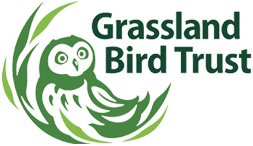Thanks to the hard work of Grassland Bird Trust (GBT) leaders and volunteers Ron Renoni (past GBT president), Keith Swensen (current GBT president), Mark Janey, and Tom Federlin, GBT was able to secure funding to work on invasive species management on its land. The funding was acquired from the Capital Region PRISM, a Partnership for Regional Invasive Species Management using funds from the Environmental Protection Fund as administered by the New York State Department of Environmental Conservation (NYSDEC).
GBT has known that invasive species were presenting significant issues in the Washington County Grasslands. However, invasive species removal can be expensive and time-consuming. The four individuals listed above decided to come together and write a proposal outlining a plan to identify and remove/manage some of the most resilient and bothersome invasive plants on GBT’s land. According to Ron Renoni, “invasive plant work is totally worthwhile because it restores the habitat, which becomes even more enjoyable for both birds and people.”
First, a grid survey was conducted to gather information on the invasive species present, their abundance on the land, and to formulate a management plan for them. Unfortunately, it was discovered that the best time to manage the abundant invasive species on GBT’s land is the same time as bird breeding season (this is due to the plants’ reproductive life cycle). NYSDEC approved GBT’s invasive species management plan, which prioritizes the minimization of impacts to breeding birds. The plan involves mowing in small areas while also applying strategic treatment of herbicides. Here is some information on the top 3 invasive species GBT has been tackling in 2022 –
Reed canary grass – this grass is planted by farmers for pasture and erosion control. It is very common in marshes and other moist ground, often forming nearly pure stands. This plant covered about 80% of GBT’s 14-acre parcel GBT owns closer to the road.
Wild parsnip – this plant is not beneficial because it has dermal toxicity. When skin comes in contact with plant sap in the presence of sunlight, it can cause severe rashes, blisters, and discoloration of skin. This affects birds and people alike. The team is trying to contain it by mowing and applying targeted herbicide treatment at the same time. In GBT’s 64-acre parcel, it’s been mowed and cut with the hope that a lot of the seeds will have been removed. In theory, once the parsnip has been cut, it won’t come back. Mowing has been extremely successful in some parts and less successful in others. However, even when parsnip grows back, it has been growing at a reduced rate. Herbicide treatment is not only expensive, but it can also be toxic. For that reason, its use is limited to problem areas.
Knapweed – results from the grid survey indicate that about 25 acres of brown knapweed cover the 64-acre parcel. Similar to wild parsnip, the best solution for knapweed is mowing with herbicide in problem areas. The herbicide “Milestone” works well in this case, which is great because its toxicity rating is low and it is not a carcinogen. The 14-acre plot has another type of knapweed that responds well to biocontrol (insects are able to feed on it). This type of knapweed is called the spotted knapweed. More of it is present near the wetland. A wetland permit is needed to treat knapweed close to the wetland. GBT is working on that for next year.
Thanks to PRISM for providing the funding necessary to make this project happen. We hope that native grasses start to grow back on our land, which will in turn benefit our grassland birds as well!
Check out our photo gallery here:

